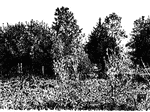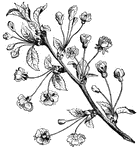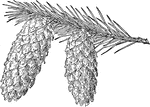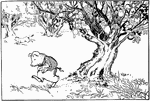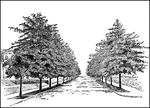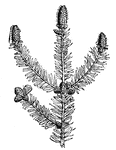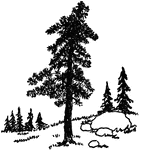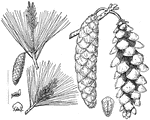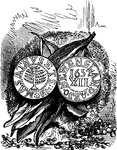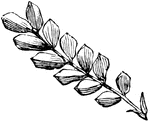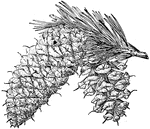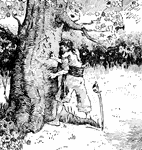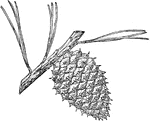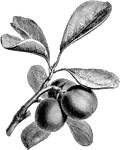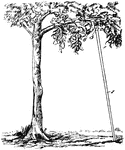
Branch of Peachleaf Willow
Also known as Salix amygdaloides. The branch of a Peachleaf Willow tree, native to southern Canada and…

Pelargoniums
"Some plants, like pelargoniums, can only be kept handsomely formed and well furnished by cutting them…

Branch of Persea Pubescens
A branch of a Persea pubescens tree, native to the coasts of the south Atlantic and Gulf of Mexico.
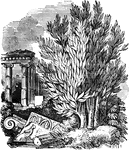
Ancient Persia
"Ancient Persia was among the great empires that figure in the early history of mankind. Little of their…
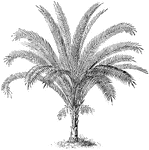
Phoenix Reclinata
Phoenix reclinata is a variety of date palm. This variety grows about fifty feet tall.

Phoenix Rupicola
Phoenix rupicola is a variety of date palm. This variety grows between fifteen and twenty feet tall.
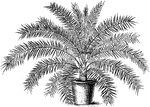
Phoenix Tenius
Phoenix tenius is a variety of date palm. It is more fine and slender than other varieties.

Phyllocladus Glauca
The common name of phyllocladus is celery-leaved pine tree. The leaves of the glauca variety are fan-wedged…

Picea Excelsa
The common names of picea excelsa are burgundy pitch tree and Norway spruce fir. The leaves are scattered…

Picea Excelsa
The common names of picea excelsa are burgundy pitch tree and Norway spruce fir. Pictured is a fruiting…
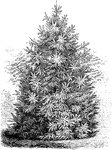
Picea Smithiana
Picea smithiana is a spruce fir. The tree grows between eighty and one hundred twenty feet tall.

Branch of Pignut Hickory
Also known as Hicoria glabra. The branch of a Pignut Hickory tree, native to the eastern United States.
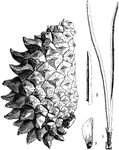
Bishop Pine
"Cone of Pinus muricata, showing the difference between the outer and inner sides of the same strobilius…

Gray Pine
Also known as Pinus sabiniana and Digger Pine. This image depicts the cone of the tree, which is generally…

Turkish Pine
Also known as Pinus brutia. It is a medium-sized tree, with an orange-red thick bark and a thin upper…

Lower Part of Cone of Pinus Excelsa
The common name of pinus excelsa is Bhotan pine. The cones are cylindrical and slightly curved. The…
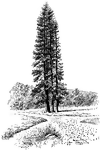
Pinus Ponderosa
Illustrated is a giant specimen of pinus ponderosa. The tree is 225 feet tall and is grown in the deep,…
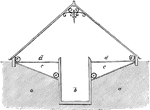
Section of Span-Roofed Pit
A diagram consisting of a section of a span-roofed pit. These pits are useful for plant culture. A,…

Platycarya
"Fortunaea chinensis; 1. a female cone; 2. ripe nut; 3. perpendicular section of do.; 4. female flower;…

Black knot of the plum
Illustrations depicting a black knot of a plum. "1...represents the general appearance of the black-knot…

Black knot of the plum
"In answer to a communication of mine, Professor C. H. Peck, botanist, of Albany new York, informs me…

Polyphemus
"Theocritus asserts that there is no rememdy for Love but the Muses. He then gives an account of the…

Branch of Pond-Apple
Also known as Annona glabra. A branch of a Pond-Apple tree, native to the southeast United States and…

White Poplar
Also known as Populus alba canescens. A species of poplar, commonly found in Spain, Morocco, and central…

Piper Porphyrophyllum
A branch of Piper porphyrophyllum. It is generally between 4 and 6 inches in length and consists of…

Branch of Prairie Crabapple
Also known as Malus ioensis. A branch of a Prairie Crabapple tree native to the regions of the upper…
Pruning
"The nature of the cut itself in pruning is of more consequence, especially in the case of fruit trees,…

Pruning
"The nature of the cut itself in pruning is of more consequence, especially in the case of fruit trees,…
Pruning
"The nature of the cut itself in pruning is of more consequence, especially in the case of fruit trees,…
